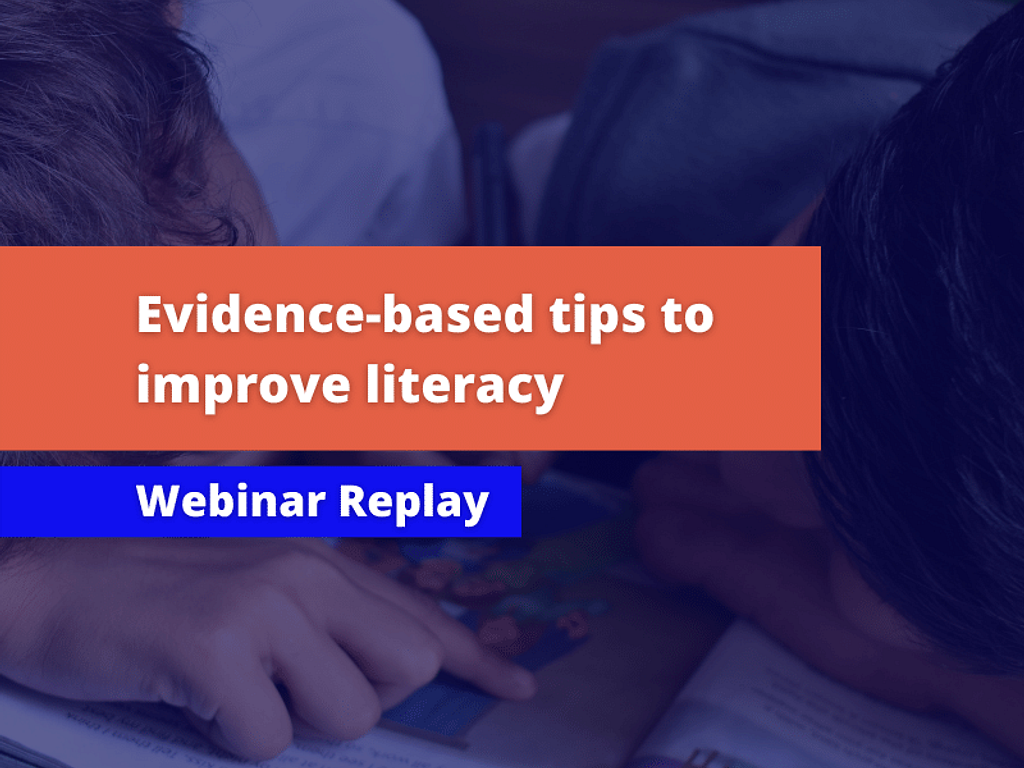Evidence for Learning: Improving literacy in upper primary
Improving literacy in upper primary
Download the Recommendations Poster
Uploaded: • 27.2 KB - pdfFirst Edition
Published
School Phase
Primary
This guide was developed by reviewing the best available international research and consulting experts, teachers, and academics to arrive at key principles for effective teaching of literacy.
This Guidance Report offers seven practical, evidence‑based recommendations – that are relevant to all students in upper primary – but particularly to those struggling with their literacy.
Students who are falling behind in literacy, come disproportionately from disadvantaged homes. A student in year 7 from the lowest quintile of social economic status (SES) is more than 10 times as likely to have reading skills below national minimum standard in comparison to a peer in the highest quintile of SES.
This guide is aimed primarily at subject leaders, principals, and other staff with responsibility for leading improvements in literacy teaching. It is not intended to provide a comprehensive guide to literacy recommendations but represents eight ‘lever points’ where there is useful evidence about literacy teaching that schools can use to make a significant difference to students’ learning. The report focuses on pedagogy and approaches that are supported by good evidence; it does not cover all the potential components of successful literacy provision.
The guide focuses on improving the quality of literacy teaching. It is intended as an accessible overview of existing research with clear, actionable guidance and several key principles to consider.
Recommendation 1: Develop students’ language capability to support their reading and writing.
Recommendation 2: Support students to develop fluent reading capabilities.
Recommendation 3: Teach reading comprehension strategies through modelling and supported practice.
Recommendation 4: Teach writing composition strategies through modelling and supported practice.
Recommendation 5: Develop students’ transcription and sentence construction skills through extensive practice.
Recommendation 6: Target teaching and support by accurately assessing student needs.
Recommendation 7: Use high-quality structured interventions to help students who are struggling with their literacy.
Evidence for Learning has produced another Guidance Report Putting Evidence to Work: A School’s Guide to Implementation which can be used as a guide as you plan to implement changes in your school relating to improving literacy.
Implementation can be described as a series of stages relating to thinking about, preparing for, delivering, and sustaining change. The section Acting on the evidence, suggests a range of strategies that you might find helpful in planning, structuring and delivering a whole‑school approach to literacy.
This Guidance Report and supporting materials are licensed under a Creative Commons licence as outlined below. Permission may be granted for derivatives, please contact Evidence for Learning for more information.
This work is licensed under a Creative Commons Attribution-NonCommercial-NoDerivatives 4.0 International Licence.
Download the Guidance Report
Uploaded: • 4.0 MB - pdfDownload the Recommendations Poster
Uploaded: • 27.2 KB - pdf
Webinars
